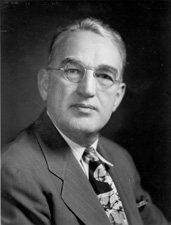James M. Mead
James Michael Mead | |
|---|---|
 | |
| United States Senator from New York | |
| In office December 3, 1938 – January 3, 1947 | |
| Preceded by | Royal S. Copeland |
| Succeeded by | Irving M. Ives |
| Member of the U.S. House of Representatives from New York's 42nd district | |
| In office March 4, 1919 – December 2, 1938 | |
| Preceded by | William F. Waldow |
| Succeeded by | Pius L. Schwert |
| Member of the New York State Assembly from the Erie County, 4th district | |
| In office January 1, 1915 – December 31, 1918 | |
| Preceded by | Patrick W. Quigley |
| Succeeded by | Andrew T. Beasley |
| Personal details | |
| Born | December 27, 1885 Mount Morris, New York |
| Died | March 15, 1964 (aged 78) Lakeland, Florida |
| Political party | Democratic |
| Residence(s) | Buffalo, New York |
James Michael Mead (December 27, 1885 – March 15, 1964) represented New York in the United States Senate from 1938 until 1947.
Biography
Born in Mount Morris, Livingston County, New York, Mead moved to Buffalo with his family at the age of four. He went to work at age 12, and was employed by the Delaware, Lackawanna and Western Railroad; his career included jobs as a water boy, lamp lighter, section hand, spike mauler, shop mechanic and switchman. He also worked for the Pullman Company as a mechanic on sleep car dynamos. Mead was later employed as a switchman on the Erie Railroad, and was eventually elected president of the Switchmen's Union's Buffalo local. From 1911 to 1914 he was employed as an officer with the United States Capitol Police.
Mead also continued his education during his railroad and police careers; he attended Buffalo's Caton School of Engineering and completed an engineering course of instruction at the Buffalo Institute of Technology.[1] He also took courses at Canisius College and Catholic University.[2] While working nights for the Capitol Police, Mead attended the Georgetown University Law Center during the day.[3]
He served on the Erie County, New York Board of Supervisors (County Council) in 1914; and was a member of the New York State Assembly (Erie Co., 4th D.) in 1915, 1916, 1917, 1918.
In 1918, Mead defeated incumbent Republican congressman William Frederick Waldow for New York’s 42nd District seat in the U.S. House of Representatives. He held the seat from 1919 to 1938. Mead left the house after defeating Republican Edward F. Corsi in 1938 to fill the U.S. Senate seat left vacant after Royal S. Copeland died in office. He was re-elected in 1940, defeating two-term Republican Congressman Bruce Barton.
Mead was the Democratic candidate for Governor of New York in 1946, losing to Republican incumbent Thomas Dewey. After his defeat, Mead served on the Federal Trade Commission from 1949 to 1955.
Mead was a New York delegate to Democratic National Convention in every presidential election year from 1936 to 1952. In 1937, the Works Progress Administration built what would eventually become the James Mead Library in Senator Mead’s hometown of Buffalo.
Mead died in Lakeland, Florida and was buried at Oakhill Cemetery in Clermont, Florida.
References
- ^ Current Biography: Who's News and Why. New York, NY: H. W. Wilson Company. 1944. p. 458.
- ^ World Biography. Vol. 2. New York, NY: Institute for Research in Biography. 1948. p. 3174.
- ^ American Law School Review. Vol. 9–10. St. Paul, MN: West Publishing Company. 1938. p. 333.
Sources
- United States Congress. "James M. Mead (id: M000615)". Biographical Directory of the United States Congress.
- James M. Mead at Find a Grave
- McCarthy, Max (May 31, 1992). "Jim Mead's Story Began in a Hut by Side of Tracks". Buffalo News. Buffalo, NY.
- Levin, Ruben (July 1, 1950). "Uncle Sam's Chief Cop: From Water Boy on Lackawanna to Chairman of Federal Trade Commission: "Jim" Mead's Great Record". The Train Dispatcher. Chicago, IL: American Train Dispatchers Association. pp. 286–289.
External links
- A film clip "Longines Chronoscope with James M. Mead (September 3, 1952)" is available for viewing at the Internet Archive
- 1885 births
- 1964 deaths
- American Roman Catholics
- Members of the United States House of Representatives from New York (state)
- Politicians from Buffalo, New York
- United States Senators from New York (state)
- Members of the New York State Assembly
- New York (state) Democrats
- Democratic Party United States Senators
- Democratic Party members of the United States House of Representatives
- People from Mount Morris, New York
- 20th-century American politicians


